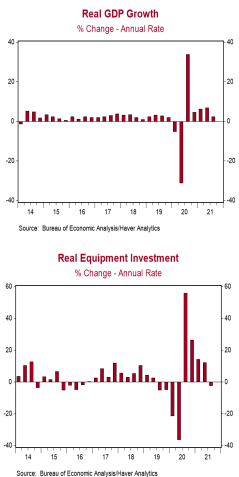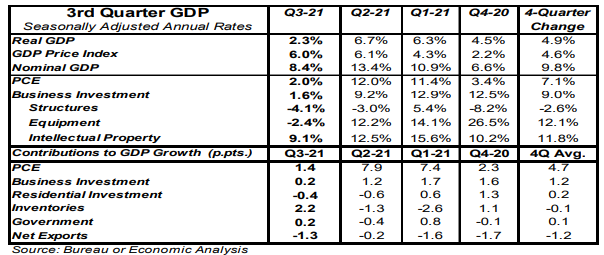- Existing home sales increased 1.9% in November to a 6.460 million annual rate, lagging the consensus expected 6.530 million. Sales are down 2.0% versus a year ago.
- Sales in November rose in the South, West, and Midwest, but remained unchanged in the Northeast. The increase was due to both single-family homes and condos/co-ops.
- The median price of an existing home rose to $353,900 in November (not seasonally adjusted) and is up 13.9% versus a year ago. Average prices are up 8.6% versus last year.
Implications:
Existing home sales continued to climb in November, rising for a third consecutive month. Since the pandemic hit US shores in early 2020, sales of existing homes have been through a wild ride, as the nearby chart shows. Now it looks like the upward trend in sales is returning despite buyers’ ongoing struggle with higher prices and lack of supply. The number of listed, but
unsold, existing homes was 1.11 million in November, the lowest number for any November on record (dating back to 1999). Our expectation is that listings will move upward in 2022, at least on a seasonally adjusted basis, as virus fears once again fade in the Spring and sellers feel more comfortable showing their homes. Meanwhile, the months’ supply of existing homes for sale (how long it would take to sell today’s inventory at the current sales pace) fell to 2.1 months in November, remaining near record lows. Despite the ongoing shortage of listings, there is still significant pent-up demand from the pandemic, with buyer urgency so strong in November that 83% of existing homes sold were on the market for less than a month. The combination of strong demand and sparse supply has pushed median prices up 13.9% in the past year, but the good news is that price gains have decelerated significantly since hitting a year-to year gain of 23.6% in May. With only one more month to go, sales in 2021 are on track to be the highest for any calendar year since 2006 and we expect another solid year in 2022 as more inventory becomes available and price gains moderate. Millennials are now the largest living generation in the US and have begun to enter the housing market in force, making up over 50% of new mortgage issuance for the first time in 2019. This represents a demographic tailwind for sales for the foreseeable future.





